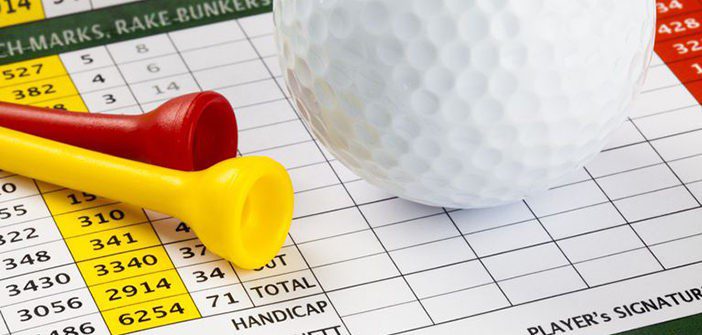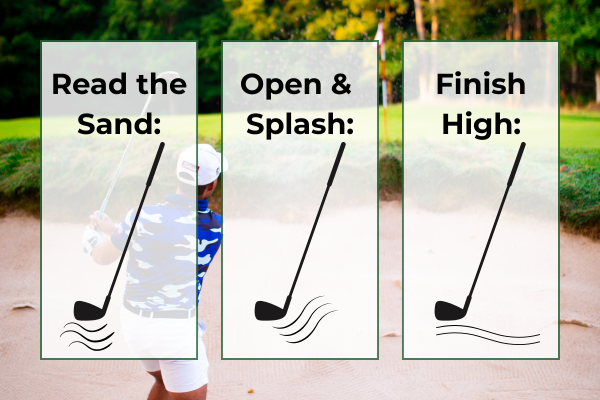What Is a Golf Handicap, and How Do You Calculate It?

In golf, players of different skill levels can compete fairly using the United States Golf Association (USGA) handicap system. The Handicap Index, as officially termed by the USGA, levels the playing field for golfers of varying abilities. Understanding how to calculate a golf handicap involves taking into account a golfer's recent scores, the course rating, and the slope rating. This system ensures that golfers of different skill levels can compete against each other on an even playing field, making the game more enjoyable and competitive for everyone.
How Does Golf Handicap Work? Five Things to Know
The USGA publishes and periodically updates the official Rules of Handicapping. Here are the five things you should know about how a golf handicap works and how it's calculated:
- How many scores are used to calculate handicap? The Handicap Index uses your eight best scores out of the past 20 to calculate your handicap.
- Are other numbers factored into a handicap calculation? Slope rating, course rating, and par are used to determine your playing handicap, allowing players to compete from different tees more easily.
- What else can affect a golf handicap? The system also accounts for abnormal playing conditions, limits extreme upward movement of a Handicap Index, and reduces a Handicap Index when an exceptional score is posted.
- What is the maximum hole score for handicap? The maximum hole score for handicap purposes is limited to net double bogey (par + 2 + any handicap strokes you receive).
- How often are golf handicaps updated? Your Handicap Index will update the day after you post a score to the Golf Handicap Information Network. On days you don't submit a score, no update will take place.
Take your game to the next level.
Master your handicap, improve your skills, and book the ultimate golf getaway today!
How to Get a Handicap Index
To establish and maintain a Handicap Index, a player must be a member of or a frequent player at an authorized golf club. Most golf courses, public and private, are authorized-so if there is a course you play often, reach out to them and they can likely set you up on the spot. You can also search for an authorized golf club by clicking here. Additionally, your Allied Golf Association can recommend clubs in your area. To find your local AGA, search here.
We offer two options at Treetops, depending on your individual handicap needs. Players who need a handicap to qualify for amateur events or some Country Clubs' Member Guest tournaments should be registered through the USGA. Those who simply need a handicap index to compete locally with other amateurs will be fine with a Recreational Handicap. Even better, with the Recreational Handicap option, a portion of the fee is donated to the Folds of Honor Foundation, which raises money for families of fallen or wounded soldiers. To inquire, simply reach out to one of our PGA Professionals who can help you get set up.
What's the Difference Between a Course Handicap and a Playing Handicap?
A Course Handicap represents the number of strokes needed to play to par for the tees being played. This is the number used to adjust hole scores for net double bogey or net par.
A Playing Handicap is the actual number of strokes a player receives or gives during a round and is the number used for the purposes of the game or competition. This number is often the same as a Course Handicap. However, if a handicap allowance is applied, if the format is match play, or if players are competing from tees with different pars, a player's Course and Playing Handicaps may be different.
Better Golf Begins with Better Instruction
Treetops Resort features five award-winning golf courses and top-notch instruction from our PGA Pro instructors at the Treetops Golf Academy. Our world-class practice facility has hosted students from all over the country to improve their golf skills with our outstanding instructors. Our keen focus on progression has produced scores of skilled alumni.
Other Articles You Might Enjoy
Firecracker Tips to Light Up Your Golf Game
Let Freedom Swing: The 4th of July isn’t just about fireworks and flags-it’s the perfect time to ignite your golf…
Treetops Bunker Basics: The Trouble with Beach Time
The Trouble with Beach Time At Treetops, our bunkers aren’t just accessories-they’re plot twists. One minute you’re striping drives down…
The Dad Index: What Kind of Golfing Dad Are You Shopping For?
Father’s Day gifting comes with its own set of hazards. This year let’s club up. Instead of another forgettable gadget, fit Dad…
Chasing Daylight: Celebrate Summer Solstice The Treetops Way
When you step onto a Robert Trent Jones Sr. designed course, you’re not just playing a round of golf –…
From Tee to Legacy: Celebrating Dads Who Golf
From Tee to Legacy: Celebrating Dads Who Golf Playing golf with your children isn’t just about perfecting a swing or…





